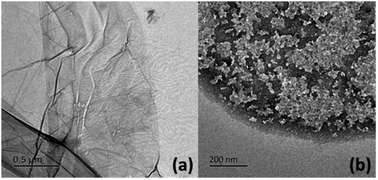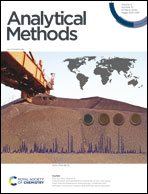A facile ratiometric electrochemical sensor for sensitive 4-acetamidophenol determination based on ferrocene–graphene oxide–Nafion modified electrode
Abstract
A ratiometric electrochemical sensor was constructed for sensitive 4-acetamidophenol (4-AP) detection. Ferrocene (Fc) was attached onto a self-assembly of graphene oxide (GO) to form a GO–Fc complex with electrostatic interactions. Furthermore, Nafion was added into the complex in a certain ratio to immobilize the complex. The GO–Fc–Nafion complex was drop-coated on the surface of a glassy carbon electrode (GCE) to prepare a GO–Fc–Nafion/GCE sensing platform. There was a strong, plotted linear relationship between I4-AP/IFc and 4-AP concentration in the range from 1 to 100 μM, with a low detection limit of 0.2 μM. This fabricated ratiometric electrochemical sensing platform exhibited high sensitivity and stability responses towards 4-AP, over potential interfering species. Experimental results confirmed high detection stability and recoveries, indicating its high feasibility for 4-AP detection in biological samples.



 Please wait while we load your content...
Please wait while we load your content...